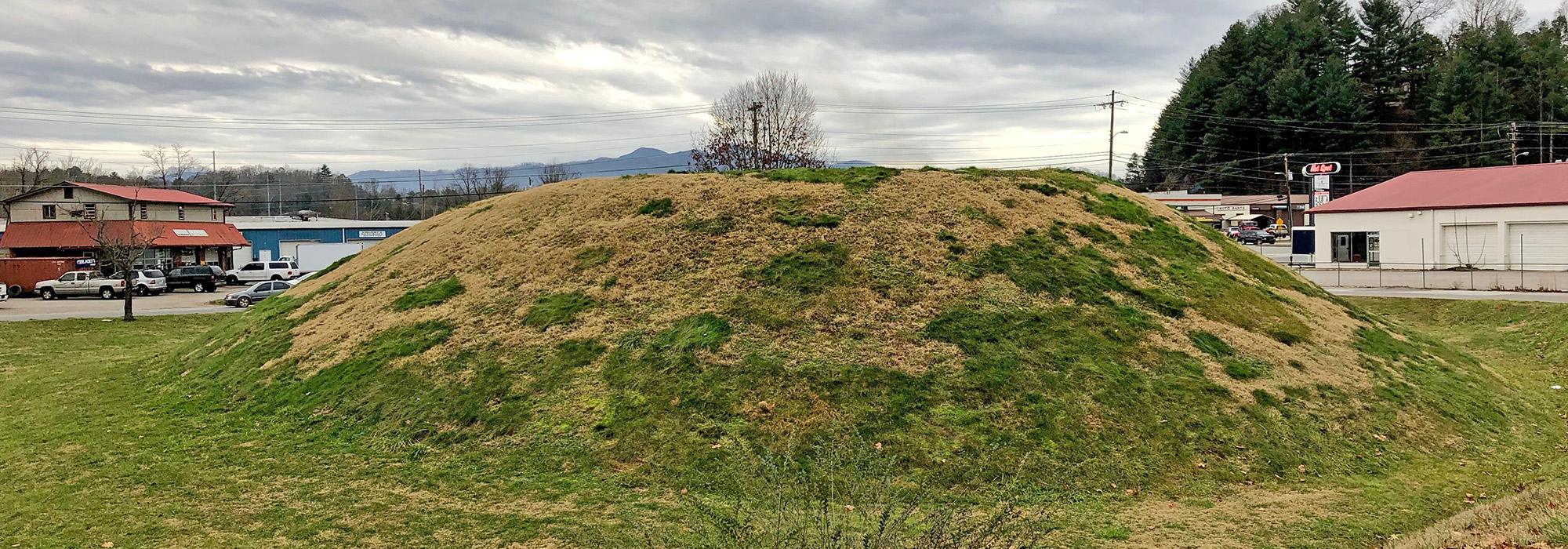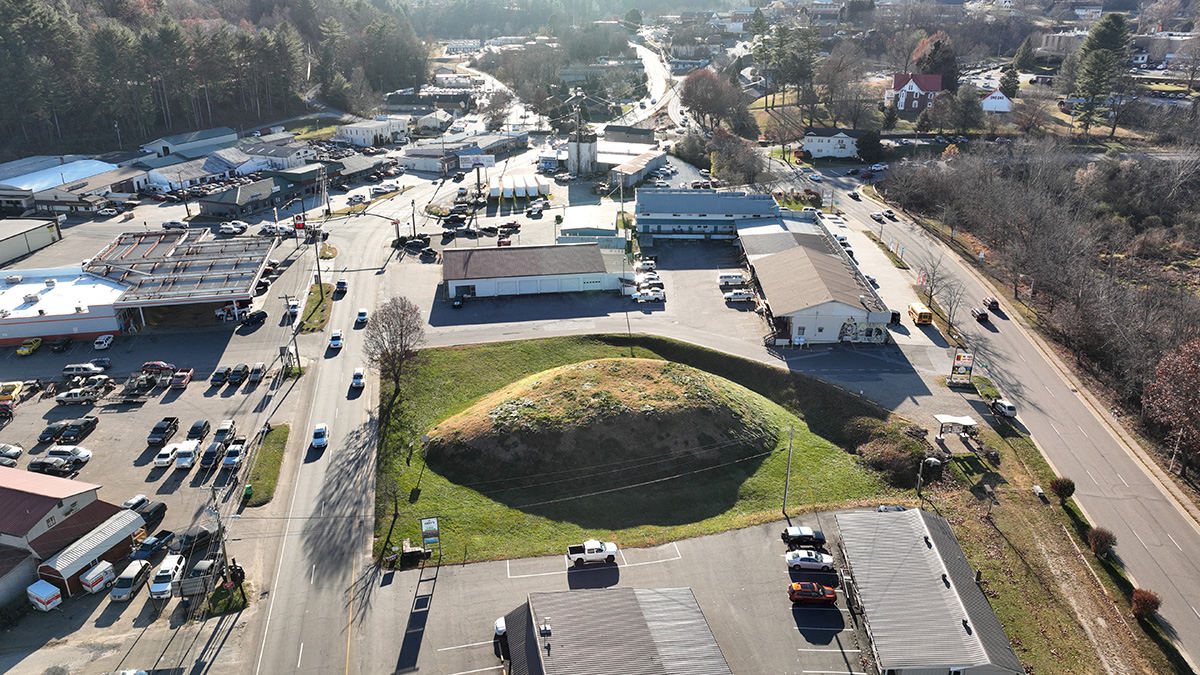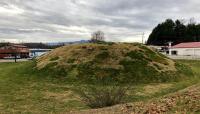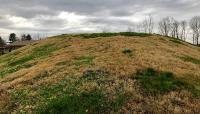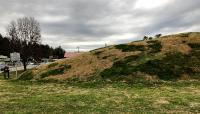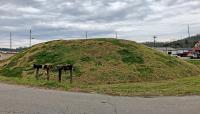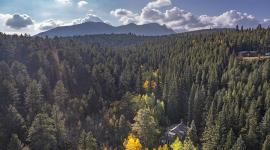Built some 1,000 years by the Cherokee Indians during what archaeologists refer to as the Mississippian period, the Nikwasi Mound in western North Carolina remains a spiritual, cultural, and ceremonial center for the Eastern Band of Cherokee Indians. A 1937 survey of the mound measured its dimensions at 30 meters wide and 50 meters long, rising to a height of six meters. Celestial and solar alignments and proximity to the Little Tennessee River define the orientation and organization of this cultural landscape. The mound’s promontory once supported a council house and central hearth fire and offered visual connections to water, sky, surrounding mountain peaks, and the mounds of several surrounding Cherokee villages. In the twentieth century, the mound’s topography was altered when its immediate setting, in close proximity to the river, was artificially elevated with several feet of fill to prevent flooding.
